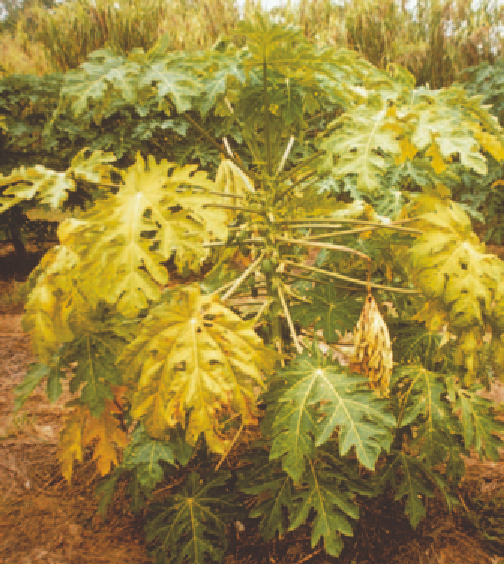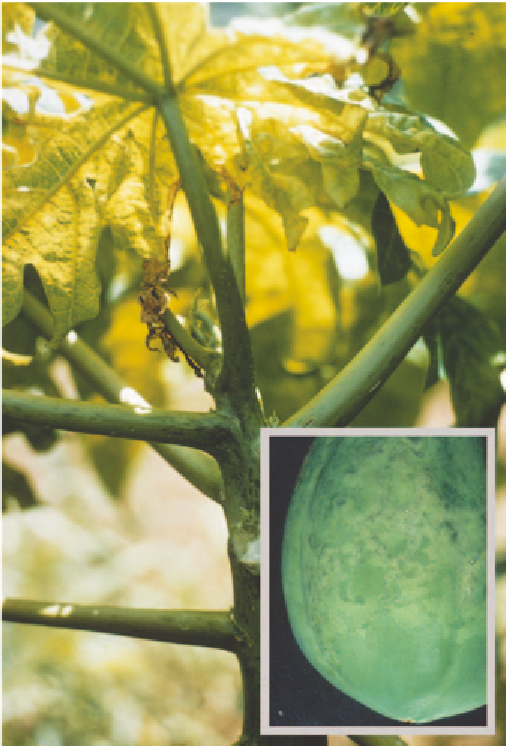Agriculture Reference
In-Depth Information
Young fruit often have light green areas that stand out against
the normal dark green colour. Latex is absent from these
areas but occurs in normal quantities elsewhere in the fruit.
It is often difficult to differentiate yellow crinkle from
mosaic disease, but the water-soaked streaks on the petioles
and upper stem and the reduced or absent latex f flow are
characteristics of mosaic. The leaf-like f floral parts are
characteristic of yellow crinkle and are not seen on mosaic-
affected plants.
Source of infection and spread
The organism causing yellow crinkle and mosaic infects a
large number of crop and weed species. It is spread by a
small leaf hopper (
Orosius argentatus
) that is very active
during hot, dry weather. Outbreaks of yellow crinkle usually
occur after hot, dry weather, which causes leaf hoppers to
migrate from dry vegetation into papaya plantations.
Fig 14.10 Papaya trees infected with mosaic (yellow) compared
with healthy trees (green).
Abnormal, green, leaf-like structures replace the f flowers.
Mosaic does not occur in a consistent pattern. It generally
occurs at a lower incidence, and is of less importance, than
yellow crinkle.
Plants affected by mosaic develop several symptoms,
although all may not be present at one any one time.
Affected plants develop stunted, chlorotic young leaves
with translucent areas around the margins that may wither
to give a ragged effect. The leaf stalks and upper portions
of the stem develop narrow, water-soaked streaks and latex
f flow is much reduced or absent. Affected plants are
stunted, producing multiple side shoots that often produce
mosaic symptoms.
Fig 14.11 Advanced yellow crinkle in papaya.
Fig 14.12 Papaya mosaic symptoms on fruit and leaves.














